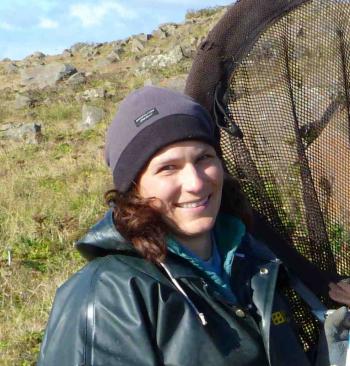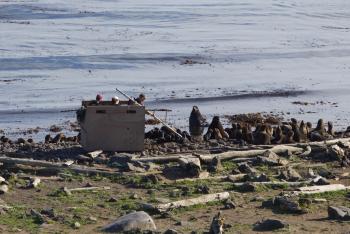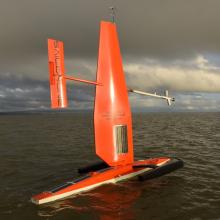Team Highlight on Carey Kuhn
Ecologist Carey Kuhn talks about her role in the ITAE program
Carey Kuhn is an Ecologist at the Alaska Fisheries Science Center's Marine Mammal Laboratory. As part of the Saildrone 2016 Team, Carey is the lead of the fur seal work.
What is your job? I am an Ecologist in the Alaska Ecosystems Program at the Alaska Fisheries Science Center's Marine Mammal Laboratory in Seattle, WA. I joined the Alaska Ecosystems Program in 2007 after completing a Ph.D. at the University of California Santa Cruz. My research focuses on the at-sea behavior of northern fur seals with the goal of understanding factors that relate to foraging success and examining relationships between fur seals and their prey. As a part of the Alaska Ecosystems team I also regularly participates in program research to assess the status, abundance, and ecology of Steller sea lions and northern fur seals in Alaska.
What is your role with ITAE? I am responsible for the northern fur seal portion of the Saildrone mission. I will be leading the field team on St. Paul Island during the deployments of the fur seal tracking instruments and will use real-time location data to guide the Saildrones into the fur seals foraging areas. Once the Saildrones are recovered, we will work closely with Alex De Robertis to integrate the fur seal behavior with the prey abundance data collected by the Saildrones’ echosounders with the goal of understanding relationships between fur seals and their primary prey, walleye pollock.
What is unique about this project? For northern fur seals, which have been experiencing an unexplained population decline since the mid-1970s, critical information is lacking on how the distribution and abundance of prey influence fur seal behavior, foraging success, and population trends. By using the Saildrones to conduct a focused prey survey within the northern fur seal foraging range, we will be able to compare concurrent measures of the vertical and horizontal distribution of walleye pollock with northern fur seal dive behavior and movement patterns. The data collected from this study will be fundamental for developing models that may help predict the impacts of human- or climate-related changes to the northern fur seals’ habitat and prey resources. In addition, these data will be integrated within our larger northern fur seal research program and used to make informed management and conservation decisions, which is vital as this population continues to decline.
What is your favorite part of your job? My favorite part of my job is during the quiet times when we are out doing research. It gives me an opportunity to watch the animals’ natural behavior and interactions with each other from a perspective very few are able to experience. I can’t imagine I’ll ever get tired of it! I also love knowing that the work I do can have an impact on the conservation and management decisions being made to help northern fur seal populations in Alaska recover.
Read more about Carey's 2016 field work on the Alaska Fisheries Science Center Dispatches from the Field blog, Understanding northern fur seal relationship with prey key to conservation.





